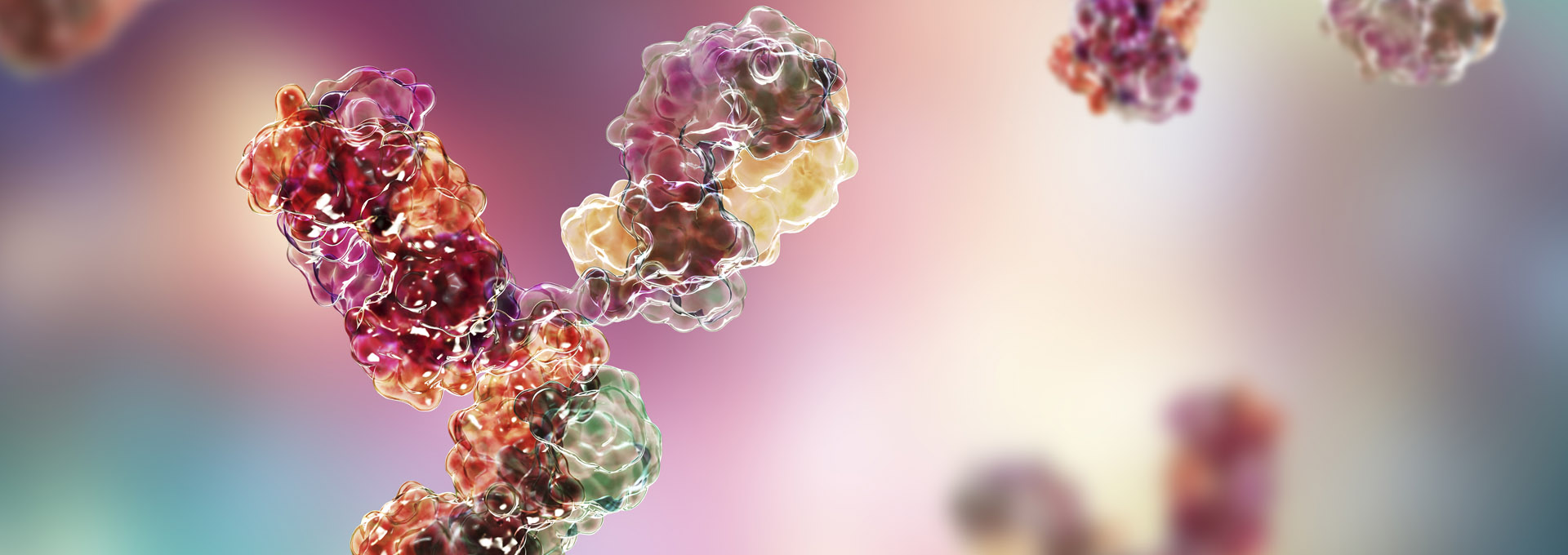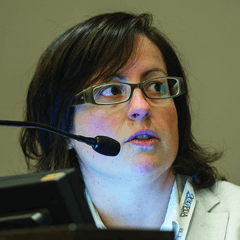Inaugural BioManufacturing Conference Tackles Five Key Issues: Part II

The inaugural BioManufacturing meeting, held Sept. 3–4 in Munich, opened discussions on current trends and novel approaches affecting biopharmaceutical products. The broad scope of the conference emphasized the importance of connecting different product platforms and allowed participants to share experiences across disciplines. Part I addressed new technologies and advancements in manufacturing science. Part II addresses control strategies, lifecycle approaches and future opportunities.
Control Strategies
While quality-by-design (QbD) is now commonly used to develop control strategies for biopharmaceutical products, industry is finding new ways to apply the fundamental principles. The session, “Quality by Design-Enabled Control Strategies,” nicely illustrated this point. Zoltán Kis, PhD, Research Association, Imperial College London, presented an academic perspective on an engineering-driven application of QbD to a generalized module for membrane antigens (GMMA) production platform. Kis pointed out that current vaccine manufacturing technologies cannot turn out products at high enough volumes and low enough costs with the speed needed to meet worldwide demands, particularly for low- and middle-income countries. But, using a QbD approach to a GMMA platform could overcome this issue and achieve an ultralow production cost (less than one cent U.S.) while also maintaining high quality.
Giovanna Campanella, Senior Manager Technical R&D, Drug Product, GSK Vaccines, offered an industry example of applying QbD to microbiological control strategies. Her presentation, “Phase Appropriate and Risk-based Design of a Bioburden and Sterilization Control Strategy for New Vaccines Candidates,” introduced the concept of sterility assurance by design. Using this approach, a vaccine manufacturer’s R&D, quality and manufacturing organizations work collaboratively to assure product sterility compliance by the design, execution and control of processes. She offered some case studies to show how the QbD approach delivers phase-appropriate microbiological control strategies supported by quality risk management.
Wrapping up the session on QbD, Martijn van der Plas, Senior Assessor Quality of Biological Medicines, Dutch Medicines Evaluation Board, provided a regulatory perspective on control strategies. The concept of control strategy, he said, offers a powerful way to integrate all the development and validation data and tell a story in a meaningful, easily understood manner in a CTD. Van der Plas argued that this concept seems underused in CTDs as opposed to criticality assessments. He presented short case studies on small-molecule impurity removal and glycosylation, where data and scientific rationale can better support process parameter categorization and justification of specification.
Shifting attention to analytical control strategies, the introduction of novel analytical tests aimed at reducing animal testing was explored. In Part I of the session, “Considerations for ICH Q2/Q14 and Advancements in Test Methodologies,” EDQM Scientific Officer, Gwenaël Ciréfice, PhD, indicated the importance of building a framework for the substitution of in vivo methods for the quality control of vaccines. The work is ongoing, necessitating collaboration by all involved stakeholders. Highlighting recent European Pharmacopoeia initiatives to reduce animal testing, Ciréfice pointed out how collaboration among manufacturers, regulators and pharmacopeias has already led to significant improvements in animal welfare.
In that same session, Marcel Hoefnagel, PhD, Senior Assessor Biopharmaceuticals, FTBB/BTG, Dutch Medicines Evaluation Board, focused on development of more precise methods for replacing in vivo release tests as part of the IMI VAC2VAC Project. The Innovative Medicines Initiative, a public-private partnership between the European Commission and the European Federation of Pharmaceutical Industries and Associations, aims to develop and validate alternatives to animal testing in the production of vaccines. Thomas Hartsch, PhD, Business Development and Scientific Consulting, Genedata, then shared how to apply a next-generation sequencing workflow to accelerate biopharmaceutical manufacturing processes.
Part II of the ICH Q2/Q14 session featured Christof Finkler, PhD, F. Hoffmann-La Roche, who gave an update on the status of the ICH Q12: Technical and Regulatory Considerations for Pharmaceutical Product Lifecycle Management revision and the new ICH Q14: Analytical Procedure Development and Revision of Q2(R1) Analytical Validation guideline. He presented examples of analytical QbD implementation in the biopharmaceutical space. Barbara Capecchi, Senior Scientist, GSK Vaccines, on the other hand, discussed the challenges and expectations related to replacing in vivo potency testing with in vitro assays. Using a case study, she showed how QbD can be of significant value for reliable potency-testing development and lifecycle management.
Lifecycle Approaches
Lifecycle management for biological products can present significant challenges, particularly when associated with changes to complex manufacturing processes and control strategies. In this context, the BioManufacturing Conference offered an overview of regulatory and technical strategies supporting this complex matter, with sessions dedicated to both ICH Q12 and comparability.
The ICH Q12 session was hosted by Nanna Kruse, PhD, Team Manager, Danish Medicines Agency, and regulatory chair of the ICH Expert Working Group refining Q12. Mihai Bilanin, Senior Manager, CMC Excellence, Global Regulatory Affairs, GSK Biologicals, and Marcello Colao, Director, Global Quality, Technical and Regulatory Lifecycle, GSK Vaccines, focused on established conditions while Janmeet Anant, PhD, Regulatory Affairs Advocate, Merck, presented a supplier’s perspective on post-approval changes in biologics manufacturing. Discussion in this session centered on the criticality of in-depth product and process knowledge for defining established conditions and performing accurate risk assessments. A question concerning pre-agreements with regulators on categorizing major post-approval changes arose during the discussion. The consensus was that such pre-agreements could eventually allow downgrading of the variation, resulting in a decrease in review timelines. This pre-agreement can be sought through scientific advice or through a post-approval change management protocol (PACMP).
The session on comparability further explored the relevance of comparability assessments to support manufacturing changes. Comparability specifically focuses on evaluating relevant data to determine whether there might be any adverse impact on the drug product due to the manufacturing process changes, per ICH Q5E: Comparability of Biotechnological/Biological Products Subject to Changes in Their Manufacturing Process. For biopharmaceuticals, this may be a complex exercise, requiring innovative strategies. Accelerated development scenarios and biosimilars assessments were cited as examples where innovative strategies might be needed.
Jose Menezes, PhD, CEO, 4TuneEngineering, and John O’Hara, PhD, Associate Director, UCB, each provided examples of successful comparability analyses. Menezes discussed FDA’s “Totality of Evidence” framework. This concept is based on different levels of similarity and “residual uncertainty,” regarding the similarity evaluated, combined with the totality of the analytical and clinical information packages. He presented an approach that combines whole analytical domains from different techniques used in comparability protocols (to support change management for same product and process) that also applies to assessing similarity in biocomparability investigations. O’Hara shared a comparability risk assessment applicable to products following a typical development path as well as those under acceleration. The comparability assessment is a multistep approach. It begins with an evaluation of the potential impact on quality attributes for each individual change, considering relevant data that could support the comparability exercise, such as small-scale data, platform data and/or prior knowledge. Data from forced degradation studies and an increased understanding of critical quality attributes throughout development provide valuable information to support comparability assessments and develop control strategies.
What Would Your Dream Biotech Facility Look Like?
In addition to compelling plenary and breakout sessions, the Biomanufacturing conference featured PDA interest group meetings and an interactive Build Your Ideal Facility! workshop.
On the first day of the conference, PDA offered attendees the option to participate in an interactive afternoon workshop to design and build a model facility for a hypothetical manufacturer switching from stainless steel to single-use systems and scaling down production to fit localized future needs. Participants used straws, sponges, duct tape, glue, paper coils and other materials to design a facility to meet the needs of the given scenario. Then, they discussed their designs with the group. It was a great hands-on learning experience enjoyed by all who participated.
The Filtration Interest Group meeting, held during the conference, focused on virus filtration and microbial and sterile filtration. Here, attendees learned more about these different filtration types from leading experts and debated ideas and best practices.
The Vaccines Interest Group convened the day after the conference—the first ever in-person meeting of this group in Europe. Experts from different companies with diverse expertise contributed to an interactive discussion on vaccine control strategy, lifecycle management and the development of PDA’s technical report for vaccines development and lifecycle.
The Technology Transfer Interest Group had also met for the first time in Europe the day before the conference. Their discussion included highlights from the recently published, PDA Research: 2019 Technology Transfer Industry Survey, along with strategies for using technology transfer as a matrix tool
Conclusion
EMA’s Dolores Hernan, PhD, Quality Specialist, wrapped up the conference with a look at the next five years of regulatory science, discussing the Agency’s Regulatory Science 2025 plan. One of the drivers behind this effort is to ensure regulators have the optimal tools to keep pace with scientific and technological advances and can soundly assess ground-breaking and more complex therapies.
This future-looking perspective prompted reflections during the subsequent Q&A. Ultimately, speakers and attendees agreed on the importance of fostering innovation through communication between regulators and industry and furthering the growth of synergies across different biological product categories.
By encouraging this type of strategic discussion and opening a dialogue for reciprocal learning, the BioManufacturing conference provided a valuable opportunity for industry and regulators. PDA will host a second BioManufacturing conference in Dublin, Sept. 22–23, to continue advancing scientific and regulatory considerations in the biologics space.



 Michael DeFelippis, PhD joined the Lilly Research Laboratories of Eli Lilly and Company in 1990 after completing his doctoral studies in biochemistry at The Ohio State University.
Michael DeFelippis, PhD joined the Lilly Research Laboratories of Eli Lilly and Company in 1990 after completing his doctoral studies in biochemistry at The Ohio State University.  Cristiana Campa, PhD, is currently a Technical R&D Advisor and Fellow at GSK Vaccines, with 20 years’ experience in biologics development, gained in different universities and companies.
Cristiana Campa, PhD, is currently a Technical R&D Advisor and Fellow at GSK Vaccines, with 20 years’ experience in biologics development, gained in different universities and companies.